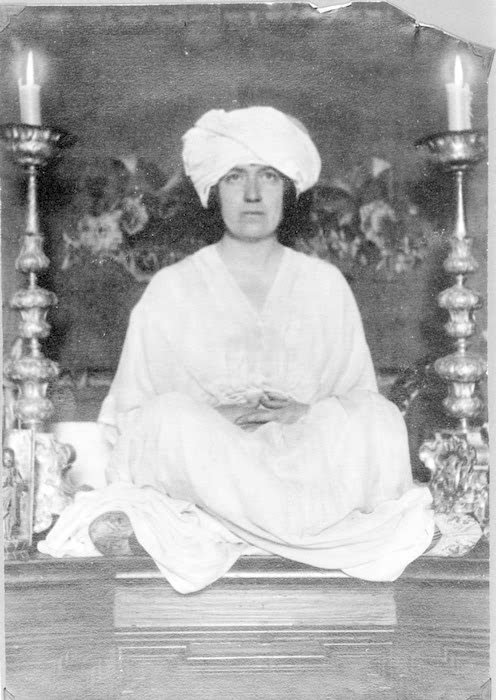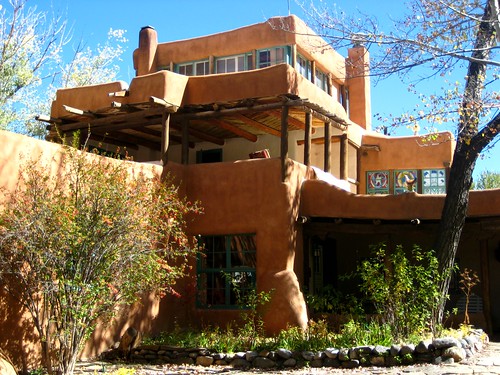Monday, September 24, 2012
Mabel Dodge: The Power of Money
CHRONICLES OF CROTON'S BOHEMIA
Early in the 20th century,Greenwich Village was a heterogeneous community of
actors, anarchists, artists, editors, feminists, intellectuals, journalists,
poets, playwrights, progressives, radicals and writers.
One woman who burst on the burgeoning bohemian scene belonged to none of these groups: Mabel Dodge.
A wealthy socialite, hostess, and promoter of the arts and social causes, she had a voracious appetite for life and love. She would join the exodus of bohemians to northernWestchester .
Elizabeth established her first school in Westchester in a
large Victorian mansion (later demolished) at 360 North Broadway in Yonkers Elizabeth asked Mabel to accompany her on a visit to Finney Farm located on the
side of a hill sloping down toward the Hudson River .
The farm had once been owned by a niece of Horace Greeley who operated it as an
experimental farm and quarantine station for imported cattle. Mabel quickly
convinced the Finneys to accept her own generous terms for a long-term lease of
the property, leaving Elizabeth
Early in the 20th century,
One woman who burst on the burgeoning bohemian scene belonged to none of these groups: Mabel Dodge.
A wealthy socialite, hostess, and promoter of the arts and social causes, she had a voracious appetite for life and love. She would join the exodus of bohemians to northern
Born
Mabel Ganson on February 26, 1879, the daughter of a rich Buffalo Buffalo
for Europe .
By
the time the ship reached Le Havre , she had
snared another suitor—a passenger named Edwin Dodge, an independently wealthy Boston Florence New York City
Mabel Dodge’s Salon
Mabel
Dodge took over the second floor of the brownstone at 23 Fifth Avenue, north Washington Square Gettysburg New York City
Acquitted
of murder, he became the first American defendant to plead temporary insanity. Sickles’
apartment on the first floor was crammed with furniture and trophies from the
other three floors converted into apartments. Sam Clemens, best known as Mark
Twain, who had moved in 1904 to 21
Fifth Avenue 9th Street
“You
couldn’t walk across the floor anywhere without stumbling over the hard heads
of lions and things,” he recalled. “It was as if a menagerie had undressed in
the place. Then there was a most decided and unpleasant odor, which proceeded
from disinfectants and preservatives and things such as you have to sprinkle on
skins in order to discourage the moths.”
“It
was a kind of museum,” Clemens added, “and yet it was not the sort of museum
which seemed dignified enough to be the museum of a great soldier—and so famous
a soldier. It was the sort of museum which should delight and entertain little
boys and girls.”
Mabel
had every stick of woodwork in her apartment painted white and the walls
covered with white wallpaper. White silk curtains hung in the windows. For
furniture, she had her French antique chairs and chaises longues shipped from Italy
News
of Mabel Dodge’s presence quickly spread. Bearded sculptor Jo Davidson, a
friend from Europe , was a frequent visitor.
Through him, she met Hutchins Hapgood, a columnist for the New York Globe, who lived in Dobbs Ferry. Hapgood became Mabel’s
confidant. Not only did he encourage her to hold evening gatherings in her
white rooms, he offered to supply interesting guests.
In
time, these would include muckraking magazine editor Lincoln Steffens; Carl Van
Vechten, music critic for The New York
Times and white disciple of African-American culture; Emma Goldman (“Red
Emma”) and her former lover, Alexander Berkman, who failed in his attempt to
assassinate millionaire Henry Clay
Frick; Max Eastman, former instructor in philosophy at Columbia and editor of
the radical monthly The Masses;
Frances Perkins, later FDR’s Secretary of Labor; author Mary Heaton Vorse;
birth control advocate Margaret Sanger, and an assortment of labor leaders,
poets and actors.
Mabel
Dodge’s “evenings,” as she called them, were usually held on Wednesdays. She
served as a catalyst, dressed in flowing robes covering her square, stubby
figure as she sat regally in a massive chair. They concluded with a buffet
supper, which made them popular with hungry poets and artists. Her salons
marked the first time such a cross-section of American society had gathered to
explore the social and political implications of the sexual, artistic and
economic changes taking place in the country.

A spiritual Mabel Dodge in white robe and turban, circa 1915.

A spiritual Mabel Dodge in white robe and turban, circa 1915.
Mabel
next became a patron of the 1913 Armory Show that introduced modern art to America Lexington
Avenue Atlantic .
But it was Marcel Duchamp’s controversial Nude Descending a Staircase that created
the biggest sensation.
Mabel
also proposed a gigantic pageant in Madison
Square Garden
to support silk workers in Paterson ,
N.J.
He
was John Reed, a rising young journalist and war correspondent active in the
radical movement. This meeting marked the start of a relationship that would
evolve into a torrid love affair.
A Trip to Croton
Mabel
Dodge’s connection with Croton began when she arrived in a chauffer-driven
limousine and rented a small house on Mt.
Airy Road
Mabel
wanted the Mt. Airy Elizabeth had operated their dancing school near Berlin
Elizabeth
Duncan and nine pupils fled Germany
for Paris and then London St. Paul
Wealthy
real estate developer Clifford Harmon happened to be a first-class passenger
aboard the ship. Aware of the Duncan
Arriving
at New York on August 31 without passports
after an uncomfortable eight-day voyage, the nine pupils were held at Ellis Island , where Commissioner of Immigration Frederick
C. Howe, a Croton resident, allowed them to stay in his quarters.
In Movers and Shakers, the third volume of
her four-volume series of reminiscences titled Intimate Memories, Mabel told how she and philanthropist Samuel
Levisohn gave $1,500 to help the Elizabeth
Duncan School
A School in Westchester
After a few months, the
school moved again, renting two stucco houses on Glengary Road Mt. Airy Barnard College
Mabel
soon realized that the tiny Sharkey cottage was too small for her needs and her
entourage. Elizabeth Duncan, who was searching for more ample quarters for her
school, learned of a large house that might be available at the Finney family’s
farm. One of the Finney children,
Katherine, was a student at her school.
Toward
the end of 1917, the Duncan school left Croton
and moved to the huge Dula estate in Tarrytown ,
an area formerly known as “Millionaires Row.” Vast and drafty, the Dula mansion
soon proved to be unsatisfactory. The school moved again in 1919, this time to
the former Archbold estate on South Broadway, also in Tarrytown .
In these latter moves Elizabeth Duncan was aided by a wealthy patron, Frank
Vanderlip of Scarborough , president of the
National City Bank, ancestor of Citibank.
The
Duncan school left Westchester and moved to Switzerland Nice , France Elizabeth died in Tübingen , Germany
Finney Farm
Leasing Croton’s
ample Finney Farm made it easier for Mabel Dodge to entertain her wide circle
of friends and guests. Among them, Journalist Jack Reed, her former lover,
accepted her offer of the third floor of the house as a writing studio. Maurice
Sterne, a Russian-born artist and sculptor, occupied a cottage behind the house.
She had met him at a dance recital given by young students of the Duncan
Almost on a
whim, she decided to make Sterne her third husband--but first she had to get
free of Edwin Dodge, who gallantly allowed her to charge him with desertion.
Mabel and Sterne were married in Peekskill 23 Fifth Avenue
“You go on a
little honeymoon out West, and I will stay here,” she told him.
Sterne wrote
frequent letters on the trip, but one written from Santa Fe
in New Mexico
To New Mexico
After traveling
to Santa Fe and finding it not to her liking,
she was driven to Taos Taos Taos Taos were harsh, Mabel often
returned to New York


The Mabel Dodge Luhan house in Taos.
Attracted by
Indian culture and by one Indian in particular, Antonio Lujan, a tall,
handsome, taciturn Indian of the Tiwa tribe, Mabel Anglicized his name to Tony
Luhan.
Complicating the
relationship, he was already married. His wife, Candelaria, a beautiful Indian
woman, would have to be persuaded to accept a divorce arranged under tribal
law.
In 1920, Mabel
began a campaign against venereal disease among the Indians of the Taos
The only
treatment was with an arsenical compound, Salvarsan, the "magic
bullet" discovered by Nobel Prize-winning bacteriologist Paul Ehrlich.
Effective only if the disease was diagnosed early, the cure involved weekly
injections over a period of eighteen months. Mabel and Tony arranged to go to a
discreet specialist in Albuquerque
To everyone’s
astonishment and amusement, she married Tony in 1923 and became Mabel Dodge
Luhan. "Lo, the poor Indian," was Edwin Dodge's wry comment. Mabel
had been hesitant about the marriage, fearing her mother would cut off
financial support.
D.H. Lawrence
Her messianic
intention at Taos Taos house included Willa Cather,
Thornton Wilder, Ansel Adams ,
Georgia
Perhaps her
greatest catch was British author D.H. Lawrence. Having read his novels Sons and Lovers and Lady Chatterley’s Lover, she regarded him as the world's most
powerful writer. Mabel bombarded Lawrence with
letters and induced him to come to Taos
Mabel offered Lawrence Lawrences Lawrence would
"take my experience, my material, my Taos
The clash of
artistic temperaments between Lawrence and Mabel soon evolved into a love-hate
relationship. Lawrence Lawrence
The Lawrences left New Mexico
in September of 1925 and returned to Europe . Lawrence died in France Taos New Mexico Lawrence
In 1935, Frieda
decided that Lawrence 's body should be exhumed,
cremated in Marseilles Lawrence 's ashes in France
and bring them to Taos
The massive
concrete block has the initials DHL molded into it and green leaves and yellow
flowers painted at one end by British artist Dorothy Brett .It sits in a small
building on the ranch. Above it, a
concrete phoenix occupies a niche in the wall below a sort of rose-window.
As a reliquary, however, theLawrence Lawrence 's ashes in Marseilles ,
he feared he would face problems bringing them into the United States Genoa
As a reliquary, however, the
Frieda had
chosen "a beautiful urn" for Lawrence 's
ashes and sent it to New York City New
York New Mexico Lawrence 's ashes may actually now be part of the roadbed
of the French national railways somewhere in southern France
Frieda and Angelo continued to live at the ranch
until
her death in 1956 on her 77th birthday. She is buried outside the chapel under a similar concrete block.
On it, he inscribed, "In memory of twenty-five years of incomparable
companionship--Angie."
Last Days
Mabel suffered
several small strokes in the late 1950's and showed increasing signs of
senility. Occasionally, she even failed to recognize blanket-clad Tony. "Who’s
that Indian?" she would ask. "Get him out of here!”
This imperious,
self-promoting, unconquerable, sometimes silly woman died in 1962 at the age of
83. Her willingness to experiment and openness to ideas helped to create the
bohemia that was Greenwich Village . Leaving an
estate that had dwindled to about $200,000, she was buried in Kit Carson Cemetery in Taos
Tony Luhan, who
had remained silent throughout the funeral ceremony, suddenly became voluble.
“Where's Mabel?" he demanded as he wandered among the mourners. "We
can't start without Mabel." He died
one year later.
The Mabel Dodge
Luhan House and the Lawrence
Labels: Croton's Bohemia, Mabel Dodge